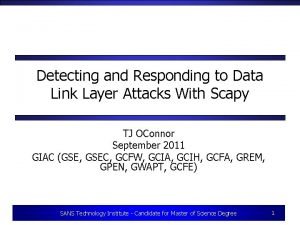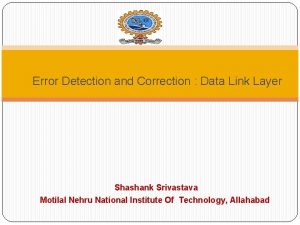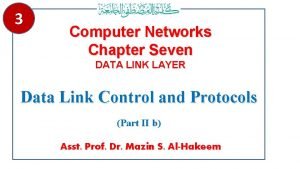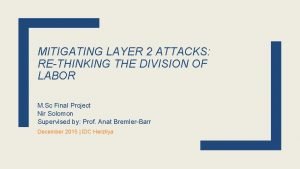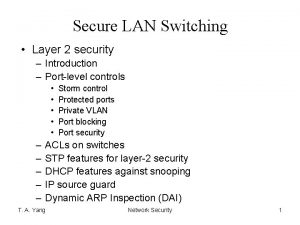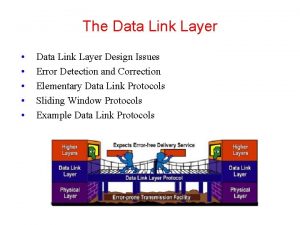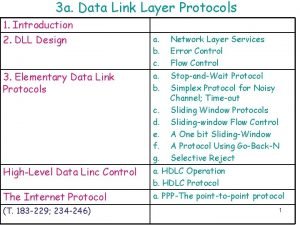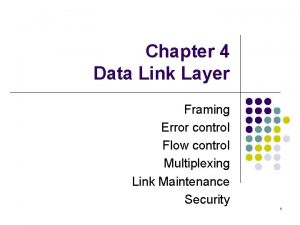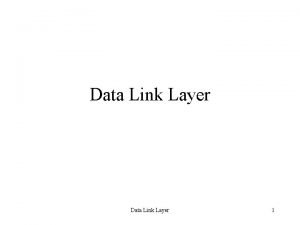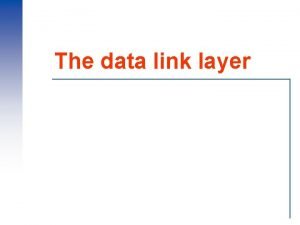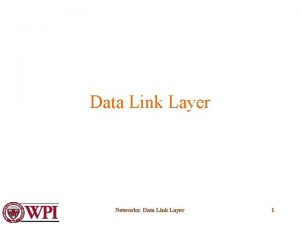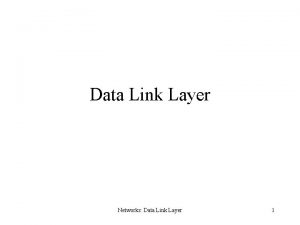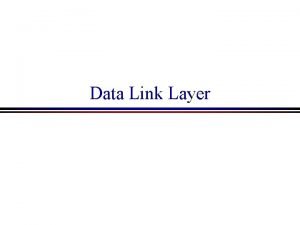Detecting and Responding to Data Link Layer Attacks















- Slides: 15

Detecting and Responding to Data Link Layer Attacks With Scapy TJ OConnor September 2011 GIAC (GSE, GSEC, GCFW, GCIA, GCIH, GCFA, GREM, GPEN, GWAPT, GCFE) SANS Technology Institute - Candidate for Master of Science Degree 1 1

The Hotel Area Network Dilemma • About 1 year ago, sitting in a hotel room in Washington D. C. – “Free” Wireless Internet starts working intermittently – Users start complaining of Facebook posts they didn’t make • Fire up IDS toolkit – IDS doesn’t see anything happening at Layer 3 – IPS isn’t seeing any attacks against the hotel either • What’s happening? – As incident responders, need the ability to quickly write tools to parse data… in this case, Layer 2 traffic SANS Technology Institute - Candidate for Master of Science Degree 2

Cam-Table Exhaustion Attack • CAM Table maintains a list of switch ports and destination MAC addresses by port • Overloading the switch with CAM Table entries results in overflowing memory. Switch no longer knows how to deliver based on MAC-port bindings SANS Technology Institute - Candidate for Master of Science Degree 3

Cam-Table Exhaustion Attack 2 3 4 1 SANS Technology Institute - Candidate for Master of Science Degree 4

Arp Spoofing • ARP translates layer 3 to layer 2 addresses • Clients maintain their own ARP tables of these logicalto-physical bindings • But anyone can broadcast a gratuitous ARP and client tables are updated SANS Technology Institute - Candidate for Master of Science Degree 5

Arp Spoofing 2 3 4 1 SANS Technology Institute - Candidate for Master of Science Degree 6

DHCP Starvation Attack • Dynamic IP addresses are leased from a DHCP server after a request by a client. The lease allows the client to use the specified address for a period of time. • By sending 254 DHCP Requests, a DHCP starvation attack prevents any new clients from joining SANS Technology Institute - Candidate for Master of Science Degree 7

DHCP Starvation Attack 2 3 4 1 SANS Technology Institute - Candidate for Master of Science Degree 8

CTS/RTS Wireless Attack • Clear-to-send (CTS) and Ready-to-send (RTS) are layer 2 unencrypted/unauthenticated messages used to prevent wireless collisions • Clients wishing to send traffic, transmit a RTS. If the medium is clear, destination responds with a CTS. Everybody else who hears the CTS- backs off. SANS Technology Institute - Candidate for Master of Science Degree 9

CTS/RTS Wireless Attack 2 3 4 1 1 SANS Technology Institute - Candidate for Master of Science Degree 10

Wireless Deauth Attack • Clients authenticate themselves to access points prior to association with the network • Authentication typically occurs over unencrypted layer 2 management frames • De-authentication also occurs over unencrypted layer 2 management frames • Tools such as aircrack-NG can spoof a deauthentication SANS Technology Institute - Candidate for Master of Science Degree 11

Wireless Deauth Attack 2 3 4 1 SANS Technology Institute - Candidate for Master of Science Degree 12

Fake Access Point Attack • Wireless access points are advertised over an 802. 11 beacon frame • Clients use the information in the 802. 11 beacon frame to connect to the wireless AP • Anyone can broadcast an 802. 11 beacon, impersonating a network • Combined with tools like karmetasploit, an attacker can instantly attack a client that joins a fake AP. SANS Technology Institute - Candidate for Master of Science Degree 13

Fake Access Point Attack 2 3 4 5 1 SANS Technology Institute - Candidate for Master of Science Degree 14

Conclusions • Layer two attacks still present a threat to modern networks • Typically these threats go unnoticed by intrusion detection systems • Scapy and a little creativity can be used to automate detecting layer two attacks • For more information, see “Detecting and Responding to Data Link Layer Attacks” published in SANS GCIA Reading Room SANS Technology Institute - Candidate for Master of Science Degree 15
 Deauth attack
Deauth attack Error detection and correction in data link layer
Error detection and correction in data link layer Data link layer protocols for noisy and noiseless channels
Data link layer protocols for noisy and noiseless channels Layer 2 attacks
Layer 2 attacks Layer 2 attacks
Layer 2 attacks Data link layer design issues
Data link layer design issues Materi data link layer
Materi data link layer Data link layer adalah
Data link layer adalah Data link layer switching
Data link layer switching Data link layer protocols
Data link layer protocols Elementary data link protocols
Elementary data link protocols Data link layer design issues
Data link layer design issues Error control in data link layer
Error control in data link layer Data link control
Data link control Communication at the data link layer is
Communication at the data link layer is Data link layer design issues
Data link layer design issues
